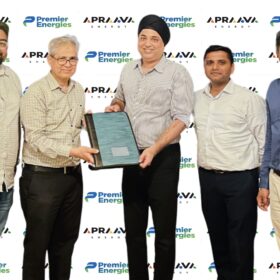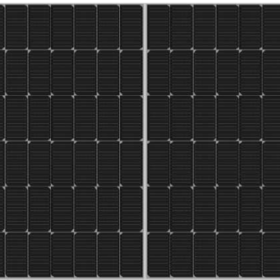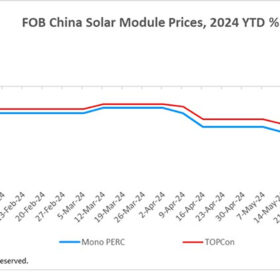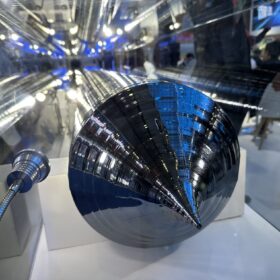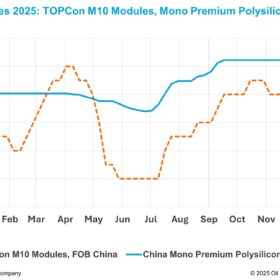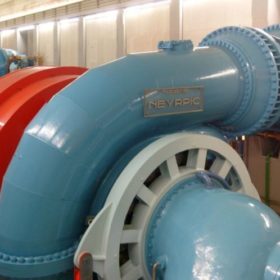All solar cell efficiencies at a glance – updated
The research group led by Professor Martin Green has published Version 64 of the solar cell efficiency tables. There are 19 new results reported in the new version.
Premier Energies secures 350 MW solar module order from Apraava Energy
Premier Energies will supply 350 MW of its solar modules to Apraava Energy’s PV project in Rajasthan.
PV market eyes recovery amid falling module prices
Martin Schachinger, founder of pvXchange.com, says that solar module prices are falling across the board, while batteries and inverters are hitting historically low prices due to market oversupply.
Waaree Energies to supply 900 MW of TOPCon bifacial modules for solar plant in Rajasthan
Waaree Energies has secured a contract to supply 900 MW of n-type TOPCon dual-glass bifacial modules for Serentica Renewables’ solar PV project in the Jaisalmer district of Rajasthan.
BirdBlocker unveils bird-proofing solutions for rooftop PV at Intersolar
Dutch company offering bird-proofing solution for solar installations expands its range with a trio of launches – with high hopes that its business can take flight on commercial rooftops.
Trina Solar begins mass production of 430-455 W full-black modules
Trina Solar says it has launched mass production of 430 W to 455 W full-black PV modules. The Vertex S+ panels have efficiencies of up to 22.8% and weigh 21 kg, with a 1.6 mm x 1.6 mm dual-glass design.
Chinese solar cell maker to build 10 GW factory in Oman
Chinese solar cell maker Hainan Drinda New Energy Technology plans to build a 10 GW factory in Oman to produce tunnel oxide passivated contact (TOPCon) solar cells.
Iron flow battery manufacturer secures $50 million investment
Publicly-traded ESS Tech announced it received an investment from the Export-Import Bank of the United States to expand its manufacturing capacity in Oregon.
China modules prices trend lower on weak demand, oversupply
In a new weekly update for pv magazine, OPIS, a Dow Jones company, provides a quick look at the main price trends in the global PV industry.
Challenges in battery cell manufacturing in India
From electric vehicles to renewable energy storage, batteries play a pivotal role in shaping a greener future. However, despite the promising landscape, battery cell manufacturing in India faces several challenges that require innovative solutions to overcome.

